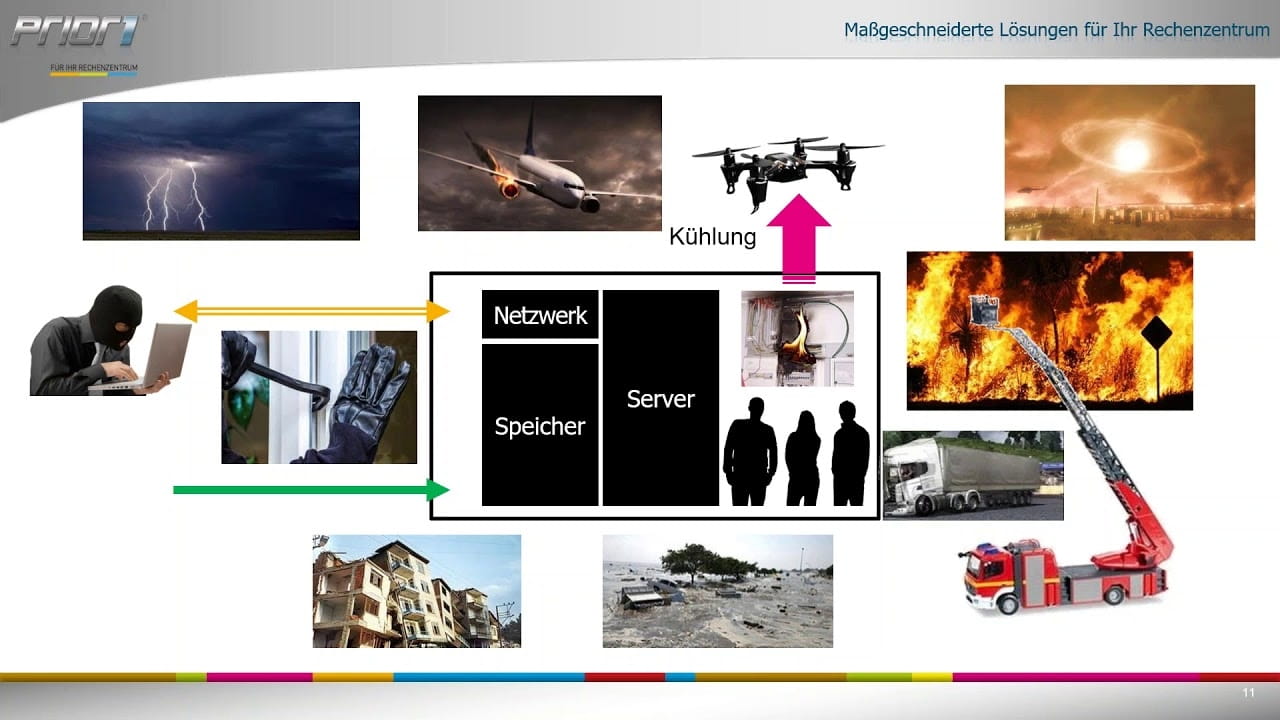Dream server incl.
Windows Server 2022 Essentials
Rack system, tower or microserver? You decide!
Edge Computing shifts the processing of data to the edge of a network. This means it is no longer necessary to send the data to a central data center or a cloud – it is processed directly at the point of origin, i.e. on the devices themselves or on a local server. This minimizes latency times, saves bandwidth and improves the execution speed of applications. The bottom line is that Edge Computing gives companies the opportunity to process data faster and better into relevant information. Edge Computing offers enormous advantages, particularly in the area of the Internet of Things (IoT).
The primary goal of Edge Computing is to optimize the efficiency and performance of networks and applications, thus enabling new use cases and optimizing existing ones. To achieve this, the processing of data is moved closer to its source, which minimizes delays. This is particularly important in the area of the Internet of Things (IoT) – where fast processing times and low latencies are essential. By processing and analyzing data in near real-time, Edge Computing can help reduce downtimes, improve product quality and cut costs in the Industry 4.0 environment, for example.
One example: Sensors record the data of a weir system (water level, flow velocity, water volume, etc.) and use it to control the weir directly on site in a decentralized manner at the edge. However, the data can still be used further via an internet connection to enable statistics, trends and statutory reporting, for instance.

With Edge Computing, data processing takes place in near real-time – an important prerequisite for IoT environments and the operation of AI or automation systems.

Data traffic in enterprise networks is growing rapidly. Edge computing reduces the load on the network, conserves resources by performing the processing in the local IoT gateway and provides protection against tampering or overload.

Edge Computing offers companies a high degree of flexibility in data processing. Performance can be scaled as needed via the number of smart edge devices used.

Thanks to real-time processing and short data paths, Edge Computing offers special protection for critical systems in which system failures are not an option.
|
Cloud Computing
|
Edge Computing
|
|
| Definition |
Cloud Computing refers to the provision and use of IT infrastructures – such as storage space, computing power or application software – via an external provider. |
Edge Computing is an approach to a distributed IT system that enables data processing at the edge of a local network, rather than close to the data source. |
| Advantages |
|
|
| Disadvantages |
|
|

In the world of digital technology, the terms Edge Computing and Fog Computing are often used interchangeably, but there are differences between these two concepts. Simply put, Edge Computing is a method in which data is processed close to its source. Fog Computing, on the other hand, is an extended model that distributes data processing across a "network fog" in a cluster of nodes where the analysis also takes place. Typically, this is a range of devices that includes IoT gateways, endpoint equipment, sensors and network devices. Therefore, Fog Computing is often seen as a bridge between the cloud and the edge.
Cloud Computing and Edge Computing are two different approaches to data processing. Cloud Computing uses centralized servers in a cloud, which is where the data is stored and processed. By contrast, Edge Computing shifts the processing of data to the edge of the network, close to where it was collected or originated. This approach minimizes latencies, as data does not have to be sent to the cloud in its entirety, but can be used initially on site. While Cloud Computing requires an internet connection with relatively high data throughput and a large bandwidth, Edge Computing enables efficient data processing even without a high-performance or even stable network connection.
Edge Computing is an established technology that opens up new dimensions of digital transformation and is already proving its worth in many applications. Edge Computing will soon form the backbone of the next generation of the Internet of Things (IoT). Start-ups and established companies are continuously investing in this technology for real-time data analysis, improved network speeds and greater security. In addition, continued advances in artificial intelligence and machine learning will make Edge Computing an indispensable part of future technology solutions.
Implementing Edge Computing in your organization can be a challenge – but the benefits are worth the effort. Start by analyzing your current IT infrastructure and identifying areas where you could benefit from Edge Computing. Choosing the right hardware and software setup – including suitable edge devices and security tools – are also part of the task. Moreover, adequately training your staff is crucial to ensure they can handle the new technologies.